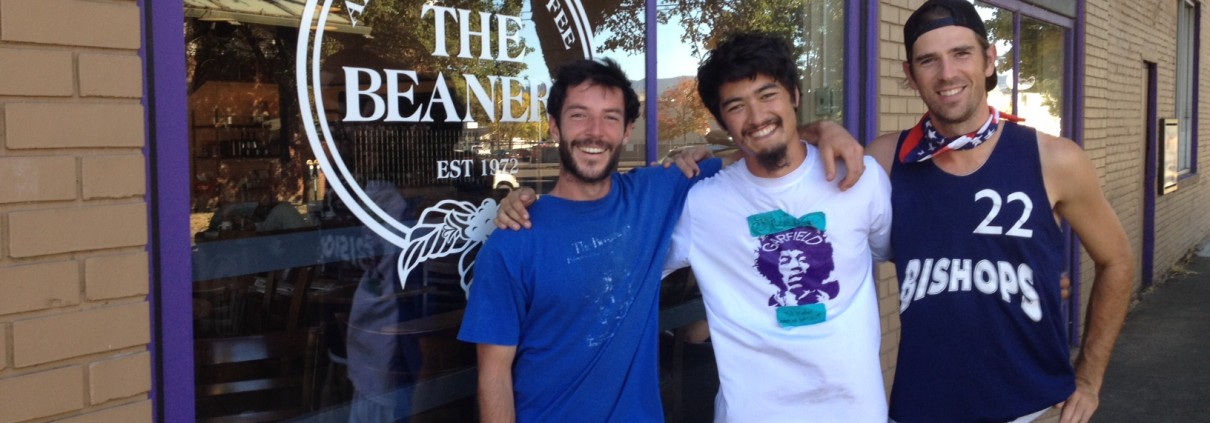Six House Rules To Live By
At my old house in Seattle, my roommates and I decided to make some house rules to help us build community and live intentionally. At first, these were straight-forward, kind of silly things. No Facebook. No internet at home (easy, because we didn’t have internet). No drunk texting/emailing exes (we had elaborate rationale about how calling was fine, just not the passive-ness and permanent-ness of texting). Eat a lot of beans. Okay, this might not have been an actual rule, but it was a fundamental principle the house was built on.
Needless to say, we had a good time with it. Breaking a rule meant a dollar in the jar, to be spent at some future date on something fun for the house. We gradually acquired more and more rules, but eventually started to realize that while these highly-specific stipulations were fun and good for building community, they weren’t helping us to do better or live more fully (except No Internet at Home – that rule was the best!). Instead, we decided to set positive intentions for how we ought to live our lives.
Experience New Things
Well, this seems obvious. Except that a lot of the time it’s not. Often when we’re deep in our routine, we need special impetus to go out and experience something new. Whether it’s an art walk, a basketball game, joining a kickball team (this is a popular thing in the Northwest), or just going for a walk in a new neighborhood, we need to keep it fresh. One of the major advantages of living in a city is that there are more new things to do than can be done in a lifetime. Not to mention getting out of the city, which is wonderful. But even in a smaller place, there is always new experience to be had. This goes hand-in-hand with always learning and generally being a curious, creative person.
Meet New People
Along the lines on experiencing new things, we can always be meeting new people. We don’t have to become best friends with everyone we meet, but we need to keep putting ourselves out there and seeing what kinds of connections arise. As we grow and change, we often find that some of the friendships and connections we’ve had have become stale. Sometimes, this is the perfect opportunity to reconnect and reinvigorate those relationships. Other times, we need to recognize that we can’t be friends with everybody all the time, and that people drift apart. This is a natural part of the mobile society we live in. Slowly, we may find our tribe of people who support and inspire us. Even then, that tribe may evolve and shift as we continue to grow and explore.
Be Mobile
Winter in Seattle is dark. Portland, too, although not quite as much. It’s not freezing cold or blustery like the northeast or midwest. But it’s dark. Cool and wet. Getting out into the world can be a serious challenge to even the most optimistic person’s psyche. The other thing about Seattle is that it’s a city of neighborhoods, and while each one contains everything you’d ever need, there are whole parts of town you never go to. The geography of the city makes it tough to go from one to another. Hence our third rule: be mobile. Get out there and do it! Bike around! Get wet! Play sports! Visit people! Try new parts of town! We basically decided that it was not acceptable to decide to skip an event because of its location. This was one of the hardest rules to follow, but it paid off. As a transplant in a city, being mobile is the only way to get to know an area and meet people outside our immediate circle of friends.
Don’t Hold Back
Do you feel like you’re holding back? This could be in any sphere of life: in physicality, in love, in friendship, in work. There is often a nagging feeling of “I could have done more,” or “I could have been more committed, more present.” Don’t hold back! Just don’t do it. We need to put ourselves out there, be vulnerable, make mistakes. This is how we learn. This is how we build up experience and wisdom. Not by reading about it on the web. By actually going out and experiencing it, by giving ourselves completely to our endeavors. Also, it’s a great thing to yell down the stairs when your friend is walking out the door to go on a date.
Be Generous
Generosity is one of the most magical character traits. It is so wonderful to be around generous people. People who are generous with their time, money, and attention are the ones we like the most. The positivity generous people create comes back to reward them, too. Life is all about abundance and sharing, not scarcity or greed. Sharing whatever we can with people close to us (and people not so close to us, but in greater need) is one of the best feelings. We tried to make generosity a built-in practice in our house, usually by sharing food and making an effort to bring people together however our means would allow.
Practice Gratitude
If generosity is the most magical outward-facing trait, gratitude is the most magical inward-facing trait. Developing a deep sense of gratitude fills us with love for life and appreciation for all the people around us, while diminishing any negativity that comes our way. We have so much to be grateful for. Just the fact that we are alive and here on this planet is astounding. That we live in an affluent and free country? Almost unbelievable. Not to mention a good education, our strong networks of friends and family, our clean drinking water, our relative peace and security. Practicing gratitude every day makes us fall in love with the world. It makes us want to give back, and to make it better for everyone else. It makes us calm, kind, and compassionate. It’s the best.
What are your house rules? What do you live by? What do you like to yell down the stairs to your friends to get them excited about life?




